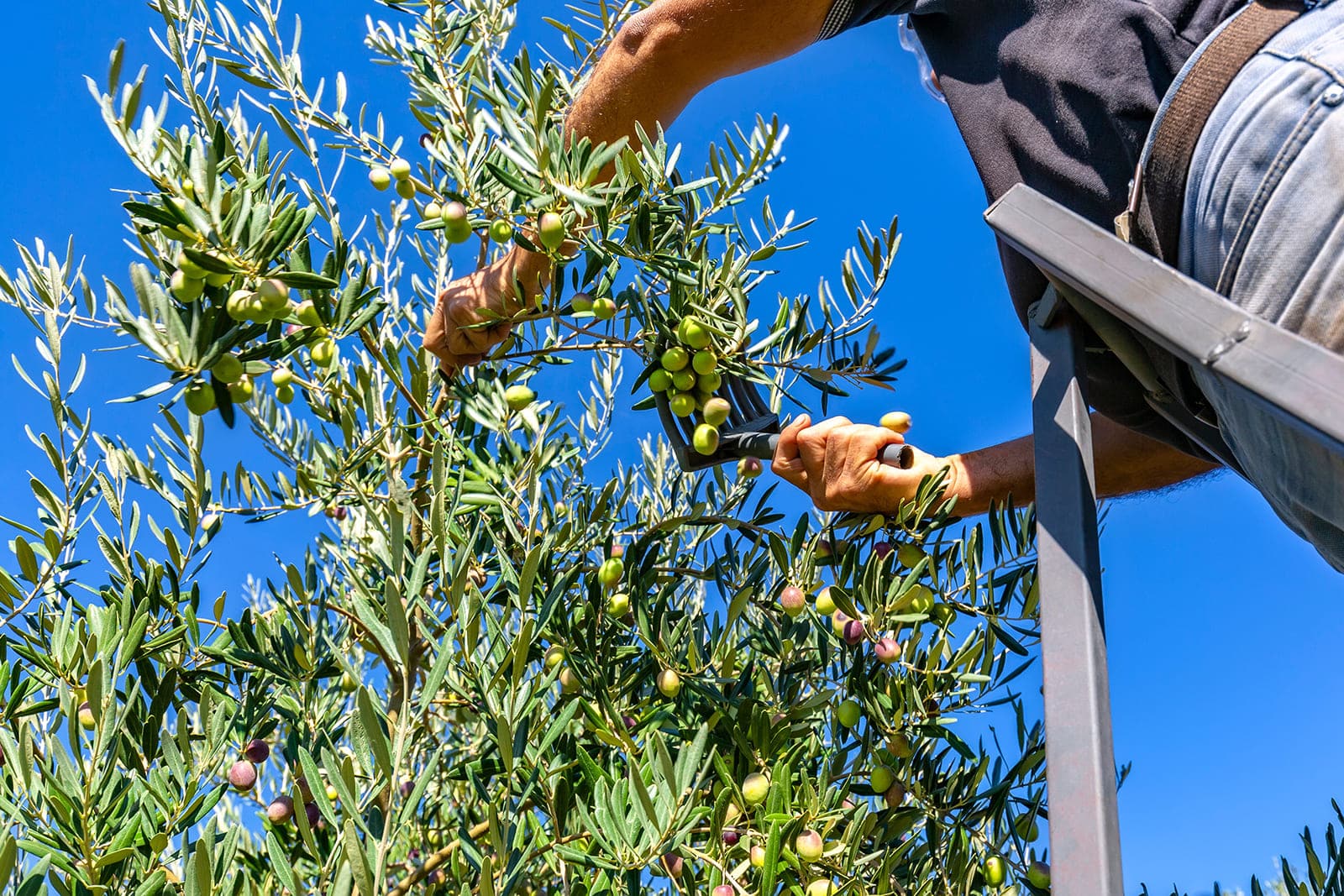Spanish olives are renowned globally for their flavor and versatility. This Mediterranean delicacy, the fruit of the olive tree, boasts numerous health benefits. Additionally, Spanish olives have several gastronomic uses, not to mention our celebrated olive oil which, in turn, has multiple uses too.
In this article, we talk about the benefits of Spanish olives, as well as the types and differences that exist according to the color.
Spanish olives: Colors, Types and Characteristics
A vast array of colors exists, each with distinct characteristics. Here’s a detailed breakdown:
- Green olives, such as Manzanilla and Queen varieties: Harvested before ripening, they have a bitter taste and firm texture. With fewer calories due to spending less time on the olive tree, they are perfect for salads and appetizers,
- Black olives, also known as ripe olives: Harvested fully ripe, they offer a softer flavor and texture. Though higher in calories, black and ripe olives, are rich in monounsaturated fats, considered “good fats for our health.” They are also a source of iron and can be enjoyed in appetizers, tapas, or Mediterranean dishes.
- Purple olives: Harvested at a medium stage of ripeness, these olives have a flavor that falls between green and black olives. Originally used in Greek cuisine, Kalamata olives are a notable example of this distinct category.
It’s essential to note that no olives are inherently healthier than others, despite variations in nutritional composition, flavor, or color. You can choose the ones that you like the most or simply alternate different varieties.
Discover the health benefits of Spanish olive nutrition
In general, Spanish olives offer nutritional properties that are highly beneficial for health. As mentioned earlier, black olives, due to their greater ripeness, provide significant nutritional value. Regardless of color, 70% of the composition of olives consists of monounsaturated fatty acids—healthy fats beneficial to your health.
Olives are high in sodium, primarily due to their preservation process in salt brine. Additionally, they are rich in fiber and minerals, including iron and calcium to a lesser extent. Furthermore, olives provide essential vitamins, with vitamin E being particularly notable.
Healthy properties of Spanish olives
- Antioxidant properties: Olives serve as excellent antioxidants, reducing oxidative stress in vital organs like the brain. Some studies suggest that consuming olives or olive oil could decrease the risk of Alzheimer’s disease.
- Digestive properties: High in fiber, olives aid digestion and have a slight laxative effect that helps empty the gallbladder.
- Cardiovascular properties: These properties act as protectors, reducing levels of “bad” cholesterol and increasing the “good” one.
In essence, Spanish olives are not just a culinary delight but a powerhouse of health benefits. Whether you fancy the robustness of black olives, the crispness of green ones, or the nuanced flavor of purple olives, each type offers unique attributes. Elevate your palate and well-being by incorporating these olives into your daily routine—nature’s gift that keeps on giving!





